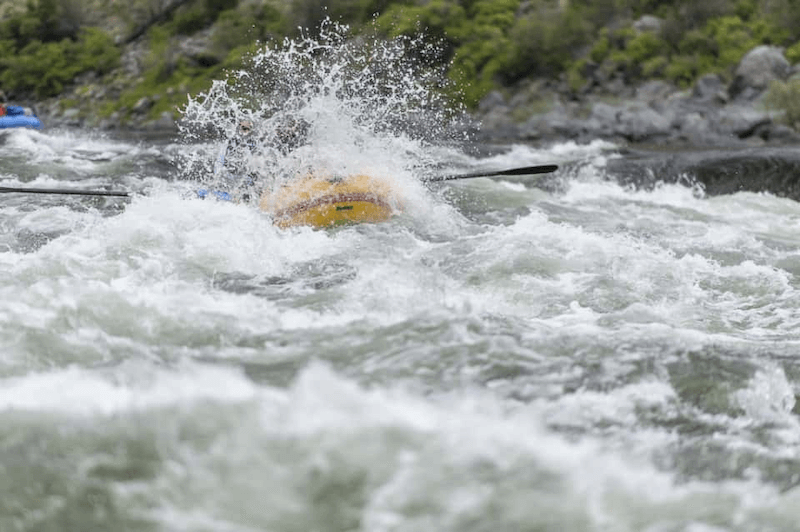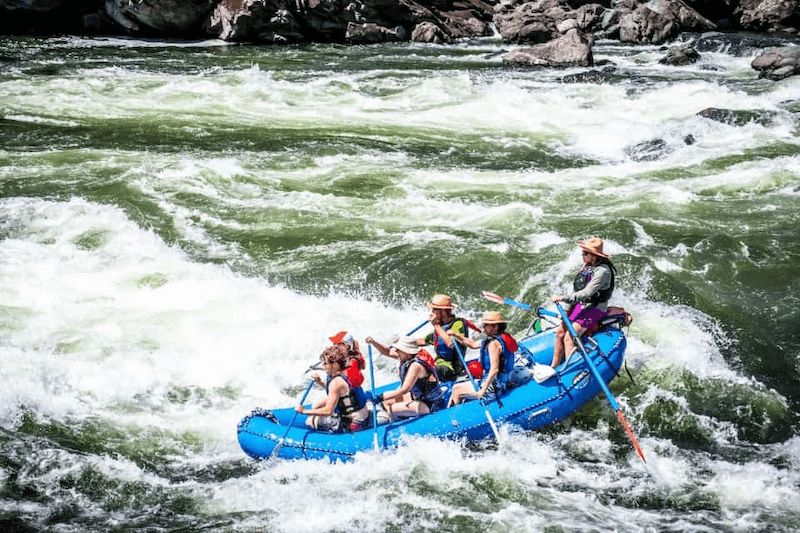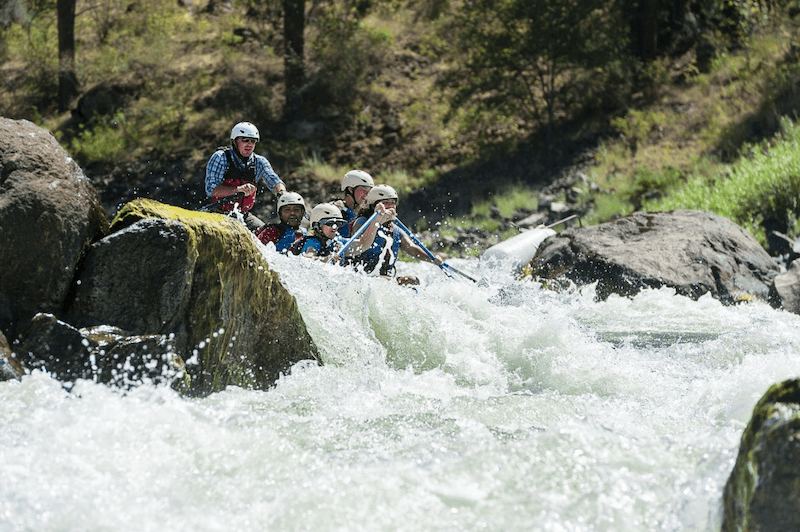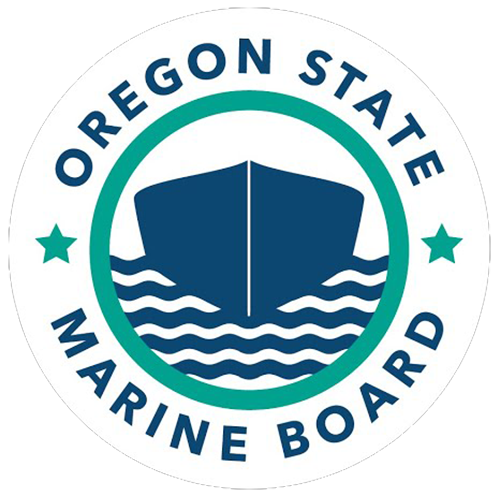What We Use: An Overview of Whitewater Rafting Gear
At Winding Waters River Expeditions , we take the gear we use seriously. The rivers we raft are powerful, but with the right equipment and safety precautions, they’re a whole lot of fun.
Read on to learn the gear we use on our white water rafting trips on the Snake , Salmon , and Grande Ronde Rivers!
Key Takeaways
- White water rafting gear ensures safety and comfort. From durable self-bailing rafts to whitewater-rated life jackets, every piece of equipment at Winding Waters River Expeditions is chosen for stability, protection, and fun on the river.
- Self-bailing rafts make for smoother rides. Designed to automatically drain water, these modern rafts enhance comfort and safety compared to older manual bailing systems.
- Personal flotation devices are non-negotiable. Even experienced swimmers need proper PFDs to stay afloat in fast-moving rapids—safety always comes first on white water rafting trips.
- Dry bags keep your essentials safe and dry. With both large and small waterproof bags provided, you can protect clothing, sleeping gear, and personal items from splashes and rain.
- Proper clothing boosts your rafting experience. Quick-dry layers, sun protection, and sturdy river sandals like Chacos help you stay comfortable in variable weather conditions.
- Eco-friendly practices protect the river. Portable toilets (groovers) and strict pack-out policies ensure that every rafting adventure leaves the rivers as pristine as they were found.
Rafts
All of our rafts are well maintained and intended for use in the exciting rivers that we raft. They’re especially designed to handle the dynamic currents of a Snake River rafting adventure, where stability and self-bailing performance truly shine.
While there are many types of rafts, the categories of white water rafting rafts we use are self-bailing, framed rafts. These rafts are designed to comfortably fit the groups we take out on the river and are very stable for our guests.
As mentioned above, these rafts are self-bailing. They’re designed to remove any water that gets in them on their own. Developed in the 90’s, self-bailing rafts have created a way more pleasant rafting experience. Prior to their invention, you’d have to physically use buckets and pumps to get water out of the raft. This not only led to a more uncomfortable experience, but also weighed the raft down and reduced stability in rapids.
key parts to a white water raft:
The raft
Made from rugged, durable materials, rafts are made into their oval-ish shape through many different inflatable air chambers. This ensures if one breaks the raft will still remain safe until the raft is patched.
Frame
This is the metal frame that holds the 2 primary oars (controlled by the guide) and a seat or slanting board where your guide will sit.
Thwarts
Used in our paddle rafts, these cross tubes of air add stability to the inflated raft and help keep its shape. They’re also useful for those not in the front of the raft to help keep them secure.
Oar Boats vs Paddle Rafts
In our oar boats, the guide sits in the center of the raft and rows, controlling the boat 100% through rapids while our guests sit in the front and/or back and hang on. In a paddle raft, both the guide and the guests will provide power for moving the boat. While paddle rafting, the guide will be steering through tricky rapids and have control over the raft. The guests will also have their own paddle. While the guide will be the driver of the raft, you and the other guests will be the motor that powers it through the river.
Personal Safety Equipment
While white water rafting would not be possible without the rafts and oars, the most important piece of white water rafting safety equipment is undoubtedly a personal flotation device, also known as a life jacket.
No matter how good a swimmer or rafter you are, life jackets are a key
water rafting safety equipment piece and are necessary to ensure your safety. While we’ve all seen life jackets throughout our lives, PFDs made specifically for white water rafting are necessary for a safe trip. The white water grade life jackets will make sure that if you are to fall out of the raft, you’ll be kept floating despite the white water. We provide comfortable, clean, and whitewater rated personal flotation devices on all of our trips.
We also provide helmets for our inflatable kayakers and paddle rafters.
Groovers
While not a piece of gear that’s needed to physically go down the river, groovers are necessary for multi-day rafting trips on the Grande Ronde River and other scenic waterways.
To protect the ecology, cleanliness, and wildlife of our rivers, we’re legally required by the
Wild and Scenic Rivers Act
to pack out everything we bring into the river. Yes that’s right, even our own human waste.
While this is an unsightly topic, groovers are portable toilets designed to make the process a whole lot less icky.
At Winding Waters River Expedition, we do everything possible to make sure the bathroom experience out in the wilderness is as comfortable as possible for our guests. Part of this is setting up and cleaning the groover, as well as providing full washing facilities for when you’re using the groover. We even have a “key” system to ensure you’re provided with adequate privacy.
Dry bags
One of the most crucial pieces of gear when you’re spending time out on the water is a quality dry bag.
These rugged waterproof sacks are used to keep your belongings dry throughout your white water adventure.
We provide large and small dry bags for your
white water rafting trip to keep your belongings safe and dry. Each guests will receive:
- • 1 large dry bag (127 liters; 18″ diameter by 31″ high)
- • 1 small dry bag (22 liters; 10″ diameter by 20″ high)
Your large bag will fit a large duffel, as well as your sleeping bag and pillow. We recommend that you bring your own sleeping bag, but do offer them for those without their own. This bag will go on a cargo raft and will not be accessible throughout the day.
For longer journeys like our Salmon River 6-Day Rafting Adventure, keeping your gear dry and organized is essential.
Your small dry bag will be for personal items. You’ll bring this bag with you daily and will have it with you on the raft.
Helpful gear you should bring
At Winding Water River Expedition, we have you covered with all of the professional rafting and camping gear you’ll need for the trip.
There are some items that we always recommend for your trip down the river, and have provided a whitewater packing list for just this purpose. Most of these items are to improve your experience and ensure you’re comfortable on the water. Some of the most key items include:
- Sun block and chapstick
- Sunglasses and eyeglass holders
- Rainsuit or poncho
- Long sleeve pants and shirts, quick dry if possible
- Swimwear
- River sandals (our guides love Chacos)
- Wool socks
- Sun hat and warm knit hat
What to Wear White Water Rafting
When you’re wondering what to wear for rafting, it's crucial to prepare for both wet conditions and changing temperatures. Ideally, you'll want gear for white water rafting, paddle board outfit, and wetsuit under clothes. Our guides appreciate wearing Chacos and a hat for additional protection from the elements.
Frequently Asked Questions
Here are some of the most common questions people ask about whitewater rafting gear and what to expect on a guided rafting trip.
What gear is essential for whitewater rafting?
The must-have gear for whitewater rafting includes a durable raft, paddles or oars, a personal flotation device (PFD), a helmet, and dry bags for keeping your belongings safe. On multi-day trips, groovers (portable toilets) are also required to comply with river regulations and protect the environment.
What type of rafts are used for whitewater rafting?
Most outfitters, including Winding Waters River Expeditions, use self-bailing, framed rafts. These rafts automatically drain water and are designed for stability, comfort, and performance in rapids. They include key parts like air chambers, a sturdy frame, and thwarts for structure and passenger stability.
What’s the difference between oar boats and paddle rafts?
In an oar boat, the guide rows and controls the raft completely, while guests sit back and enjoy the ride. In a paddle raft, everyone participates — guests paddle while the guide steers through rapids. Both offer fun experiences, but paddle rafts are more hands-on and team-driven.
Why is a personal flotation device (PFD) important?
A PFD, or life jacket, is the most crucial safety item on the river. Even strong swimmers need one because whitewater conditions can be unpredictable. PFDs designed for rafting are made to keep you afloat in strong currents and are required on every guided trip.
Do I need to bring my own gear for a rafting trip?
You’ll be provided with all essential rafting and camping gear, including rafts, paddles, helmets, PFDs, and dry bags. However, you should bring personal items like sunscreen, sunglasses, swimwear, and quick-dry clothing. Your outfitter may also have a detailed packing list to help you prepare.
What are groovers, and why are they used on rafting trips?
Groovers are portable toilets used on multi-day rafting trips to meet environmental protection laws. They ensure all waste is packed out and disposed of properly. While it may sound rustic, outfitters like Winding Waters make the setup clean, private, and comfortable for guests.
What are dry bags used for in rafting?
Dry bags are waterproof sacks that keep your clothes, electronics, and personal items dry during your trip. Typically, guests receive a large dry bag for overnight gear (like sleeping bags) and a smaller one for daily essentials that stay with them on the raft.
What should I wear for whitewater rafting?
Dress for both wet conditions and changing weather. Quick-dry clothing, swimsuits, and layers are best. Bring a rain jacket, sun hat, and sturdy river sandals like Chacos. Avoid cotton—it stays wet and gets cold. Always wear your PFD and helmet when on the water.
How do guides ensure safety on a rafting trip?
Guides are trained professionals who know the river and its conditions. They provide all safety gear, briefings before launch, and maintain control of the raft in rapids. Proper equipment, like self-bailing rafts and certified PFDs, ensures every trip is both safe and enjoyable.
What rivers can you raft with Winding Waters River Expeditions?
Winding Waters River Expeditions runs guided trips on the Snake, Salmon, and Grande Ronde Rivers—three of the top whitewater destinations in the Pacific Northwest. Each river offers unique scenery, thrilling rapids, and an unforgettable outdoor adventure.
Book your river adventure today!
At Winding Waters River Expeditions, we raft some of the top white water rivers in the United States. Our trips are fully catered with gourmet meals and you’ll be rafting with some of the best guides in the Northwest. Take a look at some of our trips and reach out to us with any questions you have!
Hear it straight from the river! Read what other rafters had to say about Winding Waters in our Google Business Profile Reviews—your next adventure awaits.
If you’ve already booked a trip with our team, we’re looking forward to seeing you out in the land of the winding waters!









